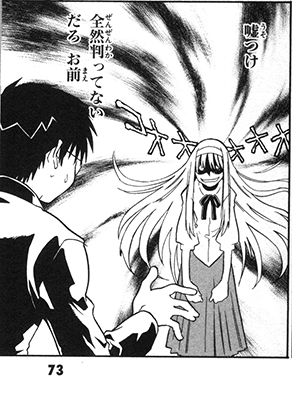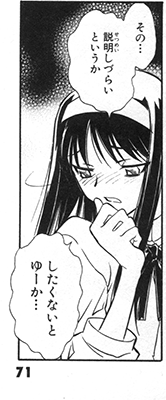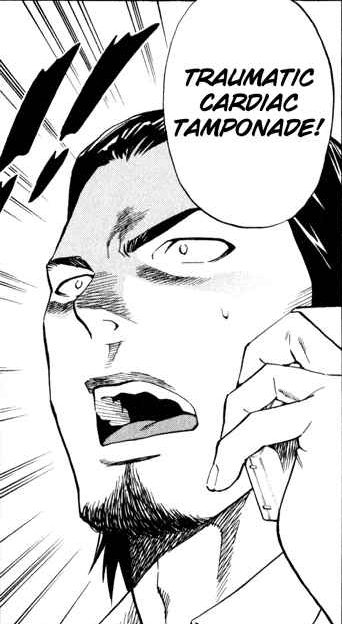instant review: some crap I bought because akibablog and zepy talked about it
Saturday, October 25th, 2008Saint Young Men, Nakamura Hikaru (Kodansha/Morning 2), vols 1+2 – Jesus and Buddha come back to the world as cute bachelors living in Tokyo. That alone is normally enough to get me to drop 552 yen but incredibly enough the execution is pretty spot-on too. The chapters are all pretty stand-alone barring the occasional joke that draws on a previous issue, but generally they are one-shots in the form of “Jesus and Buddha go somewhere normal (amusement park, matsuri, the lake, Akihabara) or do something normal (give each other haircuts, celebrate the holidays, live like poor bachelors), and the jokes just go from there. While the jokes all stem from the premise (Jesus is Jesus, Buddha is Buddha), Nakamura digs deep enough to keep them fresh, quoting scripture and Akutagawa short stories like it ain’t no thang. Artwork is solid but nothing to write home about, but that’s really not why you’re buying this, anyway. This seems to be selling like hotcakes, I’m seeing it on a lot of store special racks and in a lot of maid cafes. (zepy has some pictures for you to look at here)
Mozuya-san Gyakujou Suru, Shinofusa Rokurou (Kodansha/Afternoon), vol 1 – Manga about a small girl who happens to suffer from the recently discovered tsundere personality disorder, written by a professed otaku. I am fairly certain that between that description and this image you will know if you will want to read this manga or get really mad about it running in Afternoon and not something that starts with “Dengeki.”
Mudazumo-naki Kaikaku, Oowada Hideki (Takeshobo/Kindai Mahjong), one-shot – Basically the best manga to have ever been published. Former PM Koizumi solves issues of national diplomacy and security through mahjong. Find out which is stronger, Koizumi’s Rising Sun (Kokushi Musou) Tsumo, or Papa Bush’s Apocalypse Now (half flush Chi-Toitsu) Ron! Can Taro Aso save Koizumi from Kim Jong Il’s sinister plots, or will the Tepo-Dong get the better of Japan? How can you beat a 40 yaku hand? With a 105-yaku hand, of course. I didn’t think that the guy behind Dai Mahou Touge could actually write anything this good, but apparently he can, and Japan seems to agree with me, since this damn thing has had to have three printings in the first month it was out. Anyway, a must-read for anyone into mahjong or who enjoys parody manga in general. (akibablog-san talks about this a lot: 1, 2, 3, 4)
Nichijou, arawi keiichi (Kadokawa/Shonen Ace/Comptiq), vol 3 – I’ve gushed shortly about this manga in the past, though I couldn’t really get into volume 2 when I was reading scans of it, I’m not quite sure why. Vol 3 keeps up the trend of solid gags and impeccable comic timing. Basically, while Saint Young Men’s episodes are basically stories that use new settings to facilitate character-based jokes, Nichijou episodes are giant self-sustaining jokes or buildups to a punchline, which is the style of humor that gets me actually laughing out loud as opposed to smiles and chuckles in the case of Saint Young Men. This is basically on my permanent will-follow list unless it pulls a DMC on me or something.
Yo nimo Kimyou na Man☆Ga Taro, Man☆Ga Taro (Shueisha/Business Jump), vols 1-3 – More gag manga, kind of. I use the phrase “nightmare fuel” cautiously, but jesus christ I should not be reading this at night. Basically it is semi-avant-garde grossout horror gag manga, but all of the humor is either extremely dark or just so twisted that the punchline is “old terrifying wrinkled fat naked woman sprays fecal matter on someone and dies”. I couldn’t really bring myself to enjoy the majority of these stories since they seem to be going for not a whole lot more than pure shock value on a number of levels, but there were a few stories that I did find entertaining – the fourth story in vol 1, “Super Meitantei”, about a young amateur detective who loves detective manga who stumbles upon a horrible axe murderer driven to his obsession by horror manga, seemed especially clever to me (especially the last frame punchline), and more or less got me to buy vols 2+3 on its strength alone, a purchasing decision that I now regret on at least some level. I mean, that money could have been better spent on some Horihone Saizo or something. is apparently getting a moving picture adaptation.






